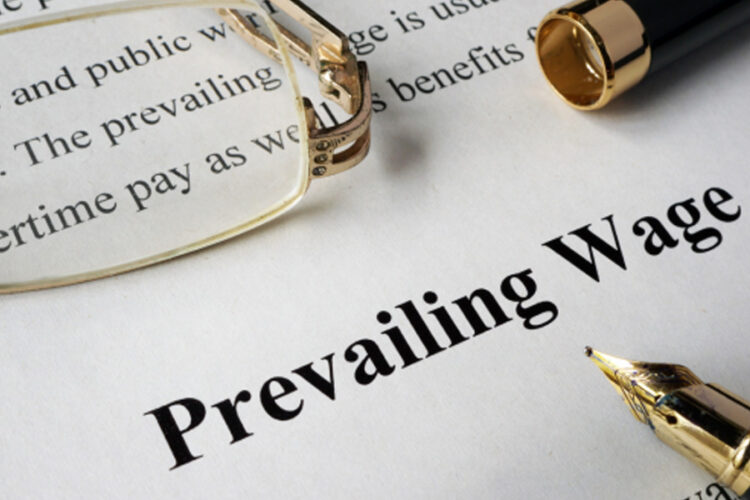The increased focus on renewable sources, prevailing wage, and apprenticeship requirements introduced under the Inflation Reduction Act (IRA) helps to maintain fair labor laws. Moreover, it also benefits the taxpayer by increasing their tax credits on the construction of cleaner energy resources such as solar and wind components. PWA compliance can increase the available tax credit by five times, making it a significant financial advantage for taxpayers investing in sustainable energy infrastructure. Let’s dive deeper to understand the legal framework and various prevailing wage and apprenticeship requirements involved in this.
Understanding Prevailing Wage Requirements
Every business venture, be it repair, construction, or alteration of the qualified facility, must pay at least the minimum prevailing wage rate set by the Department of Labor (DOL). These rates are based on location, size, and job classification. Here are the key requirements for the prevailing wage to apply:
- Wage rates are set at the time of the contract execution and remain unchanged unless the contract is amended.
- This wage will also include the offsite or secondary site work happening in a location exclusively dedicated to the project.
- Businesses can find the rate on the official site sam.gov under “Wage determination.” However, if there is no rate listed, you must submit a request to the Department of Labor to offer you one.
Understanding Apprenticeship Requirements
Apprenticeship requirements constitute three key factors that need to be kept in mind:
Labor Hours Requirements: For labor hours eligibility, a certain percentage of work must be completed by the selected apprentice:
| Timeline | Percentage of Work |
| Before 1st Jan 2023 | 10{bd90272affe4d120ba64d65cfba4568cd4aa542cc3c551f3a4d3ccc4fd1bcd98} |
| Between 1st Jan 2023 and 31st Dec 2023 | 12.5{bd90272affe4d120ba64d65cfba4568cd4aa542cc3c551f3a4d3ccc4fd1bcd98} |
| After 31st December 2023 | 15{bd90272affe4d120ba64d65cfba4568cd4aa542cc3c551f3a4d3ccc4fd1bcd98} |
Ratio Requirement: To fulfill the ratio requirements, the businesses or taxpayers employing four or more workers on a project require at least one or more apprenticeships on the location.
Participation Requirement: Any taxpayer or business must satisfy any apprentice-to-journey worker ratio following the standards set by DOL or state agencies.
Exceptions to Prevailing Wage and Apprenticeship Requirements
Where most clean energy projects must comply with the requirements provided under PWA for full tax credit, there are two major exceptions to this:
-
Projects Under One Megawatt
Household projects or small constructions with a nameplate capacity below 1 MW are exempt from PWA requirements. Similarly, projects with a maximum net output of less than one megawatt are free from the requirements to boost rooftop solar and other installations for daily use.
-
Date Of Beginning
The projects began before 29th January 2023 and don’t have to adhere to the PWA requirements. If more than 5{bd90272affe4d120ba64d65cfba4568cd4aa542cc3c551f3a4d3ccc4fd1bcd98} of the physical work has been completed, it is considered the ‘beginning of the project.’
Best Practices for Taxpayers: Legal Compliance & Maximizing Benefits
Let’s dive into some smart ways you can increase your savings on your clean energy project while maintaining all the legal prevailing wage and apprenticeship requirements to avoid any fines or penalties:
-
Proper Documentation
From detailed payroll records, including worker classifications, working hours, and wage rates. Conduct quarterly or monthly audits to ensure all the requirements meet the DOL standards. Retain all documents for at least 5 years for any DOL or IRS review.
-
Include PWA Clauses in the Contract
Be clear and transparent with all the PWA clauses and use simple language to ensure proper awareness amongst all parties. Specify areas like documentation required, wage standards, and apprenticeship utilization to mitigate risk.
-
Monitor Payroll
Although IRS-certified payroll submissions are not required, regular payroll monitoring will help you stay on top of everything and maintain efficiency. You can utilize digital payroll software to minimize errors and maximize speed.
Wrapping Up
Prevailing wage and apprenticeship requirements for the construction of clean energy projects under the IRS ensures fair working conditions for all workforce while offering taxpayers five times improved tax credit. This win-win policy will help not only motivate the consumption of clean energy but also help reduce the import of renewable components in the country. It’s a healthy step towards a green future!

